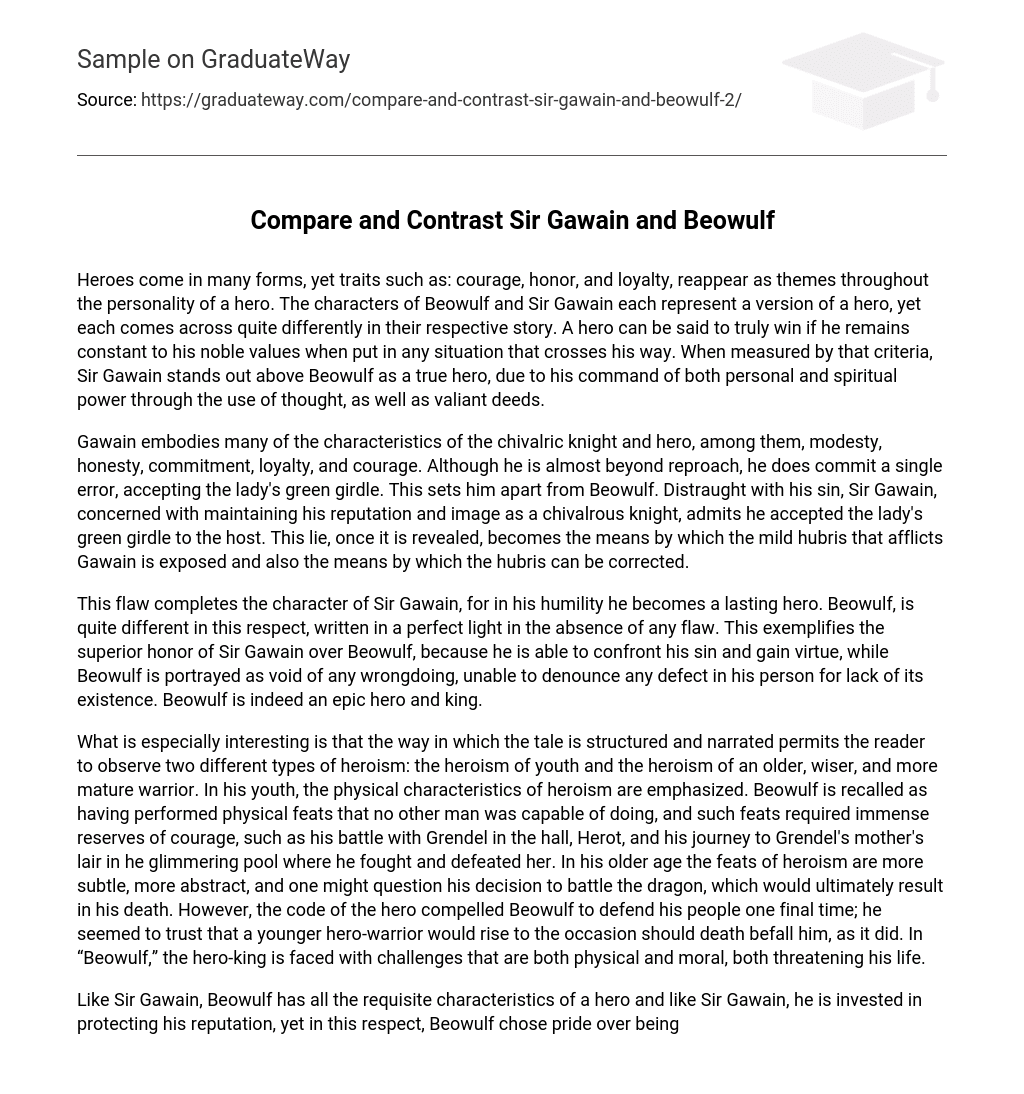Throughout history, heroes have manifested in various forms, yet certain qualities like courage, honor, and loyalty consistently emerge as prevalent themes in their personalities. In the tales of Beowulf and Sir Gawain, both characters embody different interpretations of heroism but share a common foundation. True heroism can be defined as the unwavering commitment to noble values regardless of the circumstances one encounters. When evaluated against this criterion, Sir Gawain surpasses Beowulf as an authentic hero, demonstrating mastery over both mental and spiritual strength alongside valiant actions.
Gawain possesses several qualities of a chivalric knight and hero, including modesty, honesty, commitment, loyalty, and courage. Although he is virtuous in almost every way, he makes one mistake: accepting the lady’s green girdle. This action distinguishes him from Beowulf. Overcome with guilt, Sir Gawain confesses to the host that he accepted the lady’s green girdle. Once this lie is revealed, it not only exposes Gawain’s slight arrogance but also offers an opportunity for him to correct his hubris.
This flaw completes the character of Sir Gawain and makes him a lasting hero in his humility. In contrast, Beowulf is portrayed as perfect and without any flaws. This shows that Sir Gawain has a superior honor compared to Beowulf because he is able to acknowledge and overcome his sins, while Beowulf is depicted as incapable of recognizing any faults in himself. Despite this difference, Beowulf is still considered an epic hero and king.
The interesting aspect of the tale is the way it is structured and narrated, allowing the reader to observe two types of heroism: youthful heroism and the heroism of an older, wiser, and more mature warrior. In his youth, Beowulf’s physical feats were highlighted, showcasing his unmatched bravery. These feats included battling Grendel in the hall of Herot and defeating Grendel’s mother in her lair located in a glimmering pool. As Beowulf grew older, his heroism took on a more subtle and abstract form. Some may question his decision to fight the dragon, knowing it would lead to his own demise. However, Beowulf’s code of honor compelled him to defend his people one last time. He trusted that a younger hero-warrior would step up if he were to die, which eventually happened. In “Beowulf,” the hero-king faces challenges that threaten both his life and his moral integrity.
Both Sir Gawain and Beowulf possess the qualities of a hero, including protection of their reputation. However, Beowulf displays pride rather than humility, whereas Sir Gawain radiates humility. Beowulf’s determination to fight continues even in his old age, exemplifying his selflessness, sacrifice, and boastful character. In contrast, Sir Gawain demonstrates selflessness when he volunteers to behead the Green Knight and sacrifice when he confronts the Green Knight at the tale’s end, yet he refrains from boasting or praising himself for these achievements.
Sir Gawain was a virtuous knight who followed the code of chivalry, seeking the approval of God rather than his peers and subjects. Both Beowulf and Sir Gawain display qualities of heroism, including bravery, valor, and chivalry. However, it is worth noting that their greatest virtues often lead to their downfall. Unlike Sir Gawain, Beowulf, a mighty king and warrior, met his end while successfully defeating a dragon.
Contrary to expectations, Sir Gawain succumbed to the influence of women when he accepted the lady’s green girdle. Even after successfully facing the Green Knight, he chose to continue wearing the girdle as a symbol of his shame. The presence of imperfections should not diminish the accomplishments of heroes, but rather emphasize them. Hence, Sir Gawain, with his flaws, emerges as a more honorable character compared to Beowulf.





